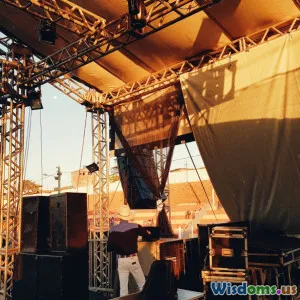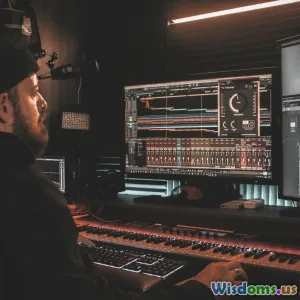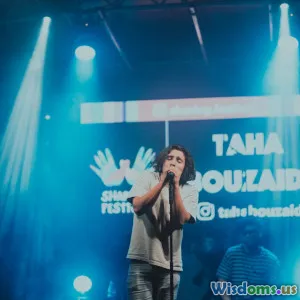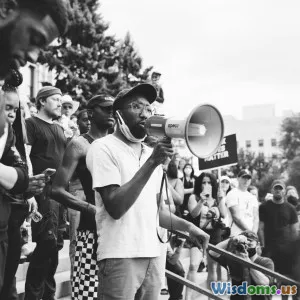
Behind the Scenes of MTV Music Awards Performances
8 min read Unveiling the intricate process behind iconic MTV Music Awards performances, revealing creative planning, technology, and artist preparation. (0 Reviews)
Behind the Scenes of MTV Music Awards Performances
Every year, millions tune in to the MTV Music Awards to witness breathtaking live performances that captivate audiences worldwide. From jaw-dropping choreography and state-of-the-art staging to unexpected collaborations, these moments become etched in pop culture history. But what does it truly take to create these spectacular shows? This article peels back the curtain to explore the elaborate preparation, creative genius, and hard work behind the scenes of MTV Music Awards performances.
Introduction
When artists take center stage at the MTV Music Awards, the exuberant energy and flawless execution make it seem effortless—yet, these performances are the result of months of painstaking planning and execution involving hundreds of professionals. MTV Music Awards have grown beyond just a typical awards show; they are a cultural phenomenon revered for pushing live production boundaries and redefining entertainment experiences.
Understanding the behind-the-scenes machinery helps appreciate not only the artistry but also the innovative technology, logistics, and raw human commitment propelling these performances from concept to reality. Let’s embark on this journey to unveil what happens before the curtains rise at the MTV Music Awards.
Conceptualization: The Birth of a Performance
Before any lighting rig is hung or sound checked, ideas are born in creative rooms where producers, directors, artists, choreographers, and stylists collide.
Collaborations and Creative Vision
Artists, often collaborating with top directors like Dave Meyers or Hannah Lux Davis, pursue themes aligning with their latest work or personal narratives. For example, Lady Gaga’s 2010 MTV Award performance of "Bad Romance" with its red leather costumes and avant-garde visuals was a deliberate expression of her artistic persona, carefully choreographed to shock and engage.
Show producers work closely to balance artistic ambitions with broadcast requirements—live timing, camera angles, and stage limitations. Engaging storyboards and animatics translate ideas into visuals, while technical teams provide feedback on the feasibility within stage constraints.
Technology’s Role in Ideation
Innovations in LED screens, augmented reality, and drone camera shots allow creative teams to dream bigger. The 2018 performance by Travis Scott incorporated immersive visuals with real-time effects triggered by the artist’s movements— a product of early conversations among CGI experts and artists.
Pre-Production Planning: Blueprint to Execution
With the concept finalized, the production phase begins, involving detailed scheduling, budgeting, and coordination.
Stage Design and Build
Designers document technical drawings specifying stage dimensions, rigging points, and integration of screens and rigging. The 2017 MTV Awards featured an enormous circular stage with dynamic LED floors that transformed during performances. Building such complex structures requires weeks, collaborating with specialized vendors.
Safety is paramount; rigorous inspections ensure compliance with local regulations.
Rigging and Lighting Setup
Lighting programmers coordinate with choreographers to design light cues that sync with music beats. Intelligent lights, strobes, and lasers are programmed for precise moments enhancing emotional impact.
The integration of lighting and pyrotechnics must be choreographed meticulously to avoid mishaps, as showcased when Taylor Swift’s 2015 ‘Bad Blood’ performance featured timed missile jets and sparks.
Sound Engineering
Audio engineers face unique challenges to deliver crystal-clear sound despite the complexities of live venues. In-ear monitors enable artists to hear the right mix crucial for pitch accuracy.
Soundcheck sessions often extend for hours, testing multiple microphones, backing tracks, and live instrument amplifiers.
Rehearsals: Refining the Performance
Rehearsal periods at MTV Music Awards are fast-paced. Artists usually rehearse a few days prior due to tight scheduling, but the intensity rivals that of a Broadway show.
Synchronization with Camera Work
Multi-camera production requires artists to hit precise marks for close-ups and wide shots. Directors rehearse choreography with camera operators to choreograph movements capturing the performance dynamically.
Technical Run-Throughs
Technical weeks integrate all elements—lighting, sound, video content, special effects, and stage cues. Each delay or fault undergoes immediate troubleshooting to maintain a flawless broadcast.
Last-Minute Adjustments
Unexpected changes, such as wardrobe malfunctions or technical glitches, lead to quick fixes. A famous MTV moment was Rihanna’s quick costume change during the 2011 show, smoothly integrated without disrupting flow.
The Big Night: Live Show Dynamics
Live TV performances are high stakes. Everyone awaits cues in real time with no room for error.
Artist Preparation Backstage
From vocal warm-ups with specialized coaches to wardrobe and makeup finishing touches, backstage areas buzz with activity.
Historically, some performances have seen artists improvise—for example, Beyoncé once extended a live vocal riff after the band missed a beat, showcasing professional adaptability.
Technical Crew Coordination
Stage managers use headset communications for instantaneous coordination among lighting, sound, and camera operators. Complex cues are timed to music beats programmed into centralized control systems.
Audience Interaction and Impact
Massive live audiences generate palpable energy influencing performance intensity. Historically, MTV’s 1997 Monster Ball featuring The Prodigy thrived on the synergy between crowd noise and stage enormity.
Post-Show Analysis and Legacy
After the performance wraps, teams analyze outcomes for future improvements.
Performance Metrics
MTV leverages viewer ratings, social media engagement, and critical feedback to gauge impact. Iconic performances frequently see spikes in streaming numbers and chart re-entries, indicating successful exposure.
Learning from Challenges
Incidents like Nicki Minaj’s 2012 delayed performance because of audio issues serve as case studies to refine processes.
Setting Industry Trends
MTV Awards performances often pioneer industry standards—be it live stream integration, 3D visuals, or spontaneous on-stage collaborations that artists emulate globally.
Conclusion
The spectacular performances at the MTV Music Awards are results of extraordinary human collaboration involving artistic creativity, technical mastery, and instantaneous precision under pressure. Each mesmerizing act carries the imprint of months of behind-the-scenes dedication, advanced technology, and unyielding passion.
Next time you watch an MTV Music Awards performance, remember the army of professionals and the theatrical craftsmanship orchestrated meticulously to make moments that are not just shows but unforgettable cultural touchstones.
Rate the Post
User Reviews
Other posts in Music Awards & Recognition
Popular Posts

















